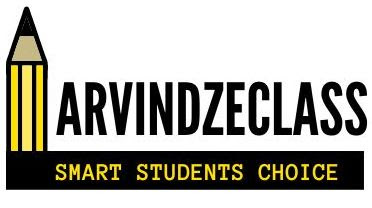Class 10 Artificial Intelligent Code 417 Solutions
Session 2025-26
Artificial Intelligence code 417 syllabus pdf class 10 solutions. Class 10 AI Book. Class 10 AI Notes. This article provides complete solution for class 10 AI (Artificial Intelligence) Code - 417 students according to new syllabus 2025 – 26. In this article first of all go through the AI Code - 417 syllabus and then follow chapter wise notes.
Part A - Employability Skills Notes
Chapter 4 - Entrepreneurial Skills - II
Part B - Subject Specific Skills Notes
Chapter 1 - AI Project Cycle & Ethics
Chapter 2 - Modelling in AI
Chapter 5 -Computer VisionData in AI
In simple terms, data refers to raw facts, figures, or information that can be collected, stored, and analyzed. In the context of Artificial Intelligence (AI), data is the foundational input that is used to train models, make predictions, and drive decision-making. Without data, AI systems cannot learn or function effectively.
Types of Data in AI
Data in AI can be classified in several ways depending on structure, source, and labeling. Here's a breakdown:
1. Based on Structure
a. Structured Data
- Definition: Data organized in rows and columns (tabular format).
- Examples: Spreadsheets, databases, financial records.
- Use in AI: Good for traditional machine learning algorithms (e.g., regression, decision trees).
b. Unstructured Data
- Definition: Data that doesn't follow a specific format or structure.
- Examples: Text documents, images, audio files, videos.
- Use in AI: Requires techniques like deep learning, natural language processing (NLP), or computer vision.
c. Semi-Structured Data
- Definition: Partially structured data that doesn't fit neatly into tables but has some organizational properties.
- Examples: JSON, XML, HTML documents.
- Use in AI: Useful for web data extraction, data integration tasks.
2. Based on Labeling (Supervision)
a. Labeled Data (Annotated Data)
- Definition: Data that comes with tags or labels indicating the correct answer.
- Examples: Images with tags like "cat", "dog"; emails labeled as "spam" or "not spam".
- Use in AI: Used in supervised learning where models learn from example-input/output pairs.
b. Unlabeled Data
- Definition: Raw data with no labels or annotations.
- Examples: Random internet text, untagged photos.
- Use in AI: Used in unsupervised learning (e.g., clustering, dimensional reduction).
c. Partially Labelled Data
- Definition: A mix of labelled and unlabelled data.
- Use in AI: Used in semi-supervised learning where a small labelled set helps guide learning on a large unlabelled set.
3. Based on Data Modality
a. Text Data
- Examples: Articles, tweets, customer reviews.
- AI Application: Natural Language Processing (e.g., chatbots, sentiment analysis).
b. Image Data
- Examples: Photographs, medical scans.
- AI Application: Computer Vision (e.g., facial recognition, object detection).
c. Audio Data
- Examples: Speech recordings, sound clips.
- AI Application: Speech recognition, emotion detection.
d. Video Data
- Examples: Surveillance footage, video tutorials.
- AI Application: Action recognition, video summarization.
e. Time-Series Data
- Examples: Stock prices, sensor data over time.
- AI Application: Forecasting, anomaly detection.
Summary Table
| Type | Format | Used In |
|---|---|---|
| Structured | Tables/Spreadsheets | Traditional ML |
| Unstructured | Images, Text, Audio | Deep Learning, NLP, Computer Vision |
| Labeled | Tagged Inputs | Supervised Learning |
| Unlabeled | Raw Data | Unsupervised Learning |
| Text | Words/Sentences | NLP, Translation |
| Image | Pixels | Computer Vision |
| Audio | Sound Waves | Voice Assistants, Music Classification |
| Time-Series | Sequential Data | Forecasting, IoT Analytics |
Modeling in AI
Modeling in AI is the process of creating a system that represents or mimics human decision-making, reasoning, or learning. This model uses input data to make predictions or solve problems.
In simple words: It’s like teaching a computer how to think, act, or make decisions by building a digital version (model) of a real-world process.
 |
| AI Model |
Rule-Based Approach
Definition:
A rule-based approach uses a set of predefined "if-then" rules written by humans to make decisions.
Features:
- Based on human knowledge and logic.
- Rules are manually coded.
- Used for simple, well-defined problems.
Example:
if temperature > 30:
print("It's hot")
AI doesn't learn here — it only follows rules.
Advantages:
- Easy to understand and explain.
- Good for fixed or small problem domains.
Disadvantages:
- Not suitable for complex or changing environments.
- Difficult to scale.
Learning-Based Approach
Definition:
A learning-based approach allows the AI to learn patterns and make decisions by analyzing large amounts of data.
Features:
- Based on data and statistical models.
- AI learns from experience.
- Uses algorithms like neural networks, decision trees, etc.
Example:
A spam filter learns to recognize spam emails by analyzing thousands of labeled examples.
The model improves its performance over time by training on more data.
Advantages:
- Can handle complex and dynamic problems.
- Adapts and improves with more data.
Disadvantages:
- Requires large datasets and computing power.
- Harder to explain how decisions are made (black-box).
Summary Table:
| Feature | Rule-Based Approach | Learning-Based Approach |
|---|---|---|
| Based On | Human-written rules | Data and algorithms |
| Learning | No | Yes |
| Flexibility | Low | High |
| Example Use Case | Thermostat logic | Face recognition, spam detection |
| Complexity Handling | Poor | Good |
Part A - Employability Skills Question/Answers
Chapter 2 - Self - Management Skills - II
Chapter 4 - Entreprenurial Skills - II
Part B - Subject Specific Skills Question/Answers
Chapter 1 - AI Project Cycle & Ethics
Chapter 2 - Modelling in AI
Chapter 5 - Computer VisionPart A - Employability Skills MCQs
Chapter 2 - Self - Management Skills - II
Chapter 4 -Entrepreneurial Skills - II
Part B - Subject Specific Skills MCQs
Chapter 1 -AI Project Cycle & Ethics
Chapter 2 - Modelling in AI
Chapter 5 - Computer VisionClass 10 Resource Corner
--------------------------------------------------









No comments:
Post a Comment